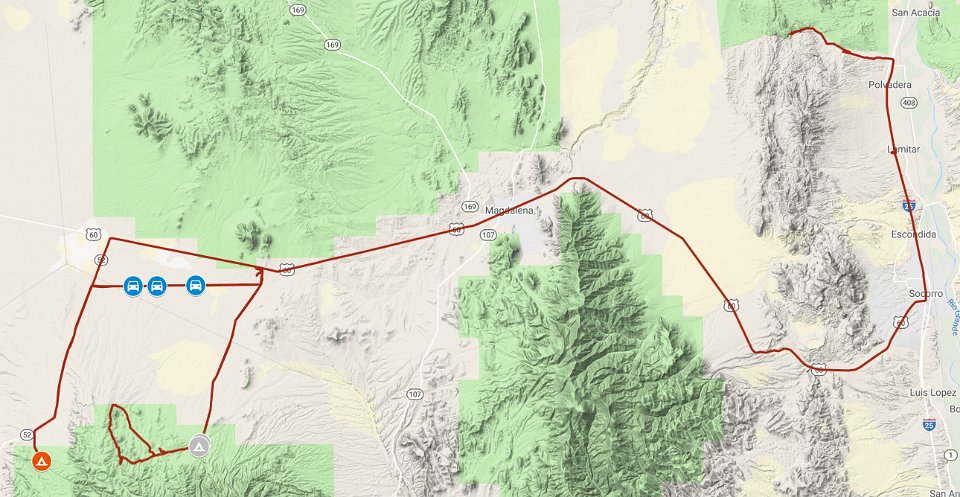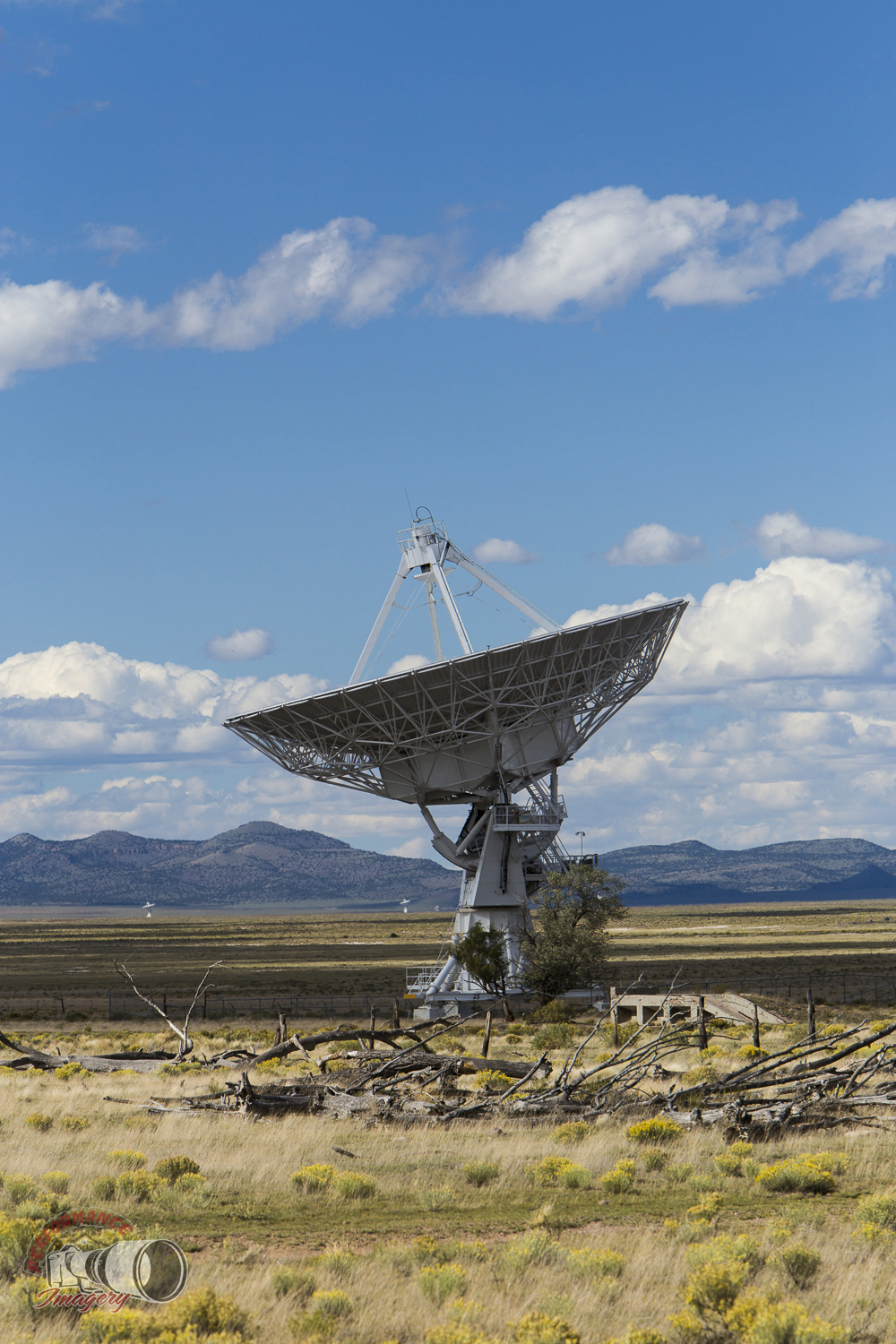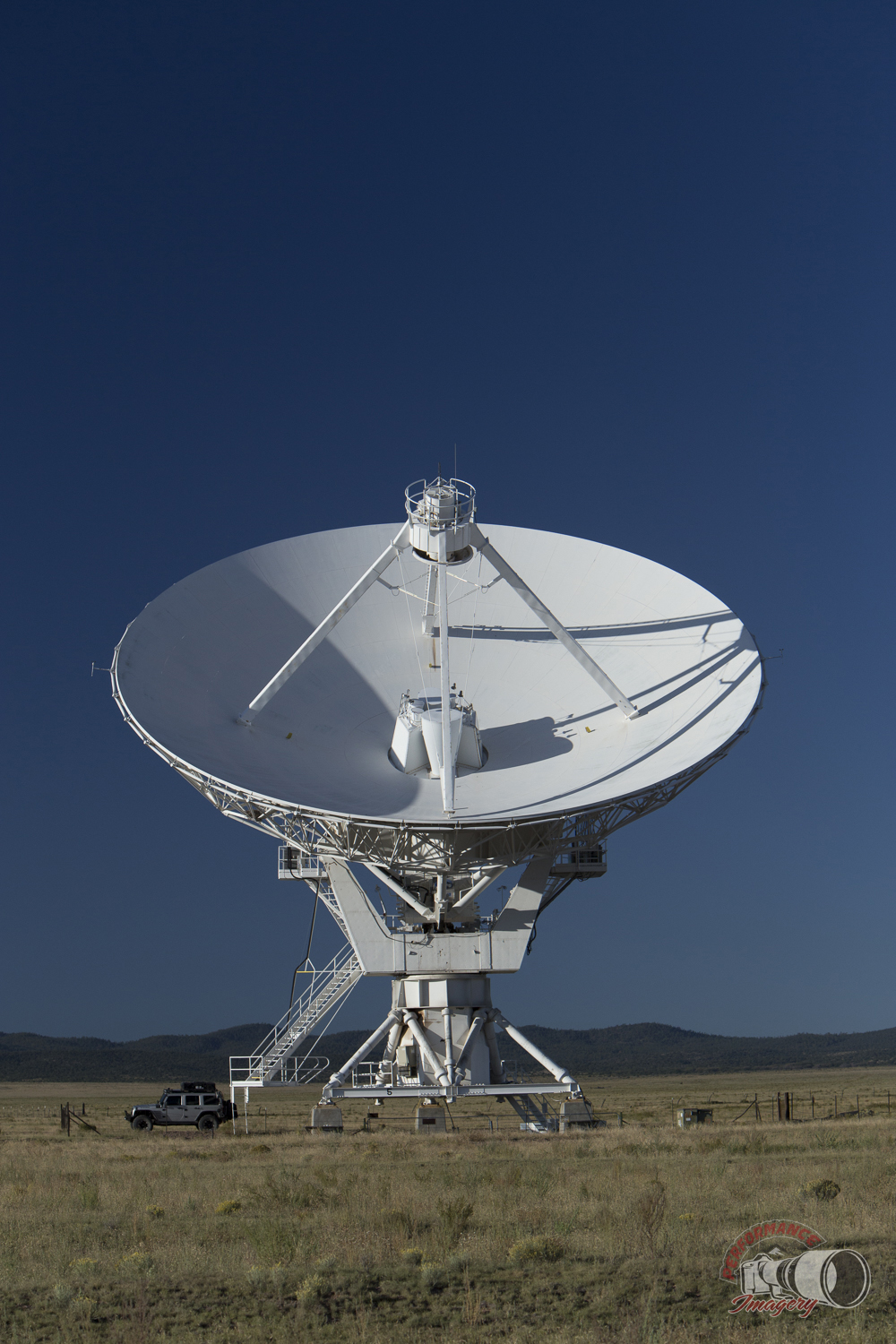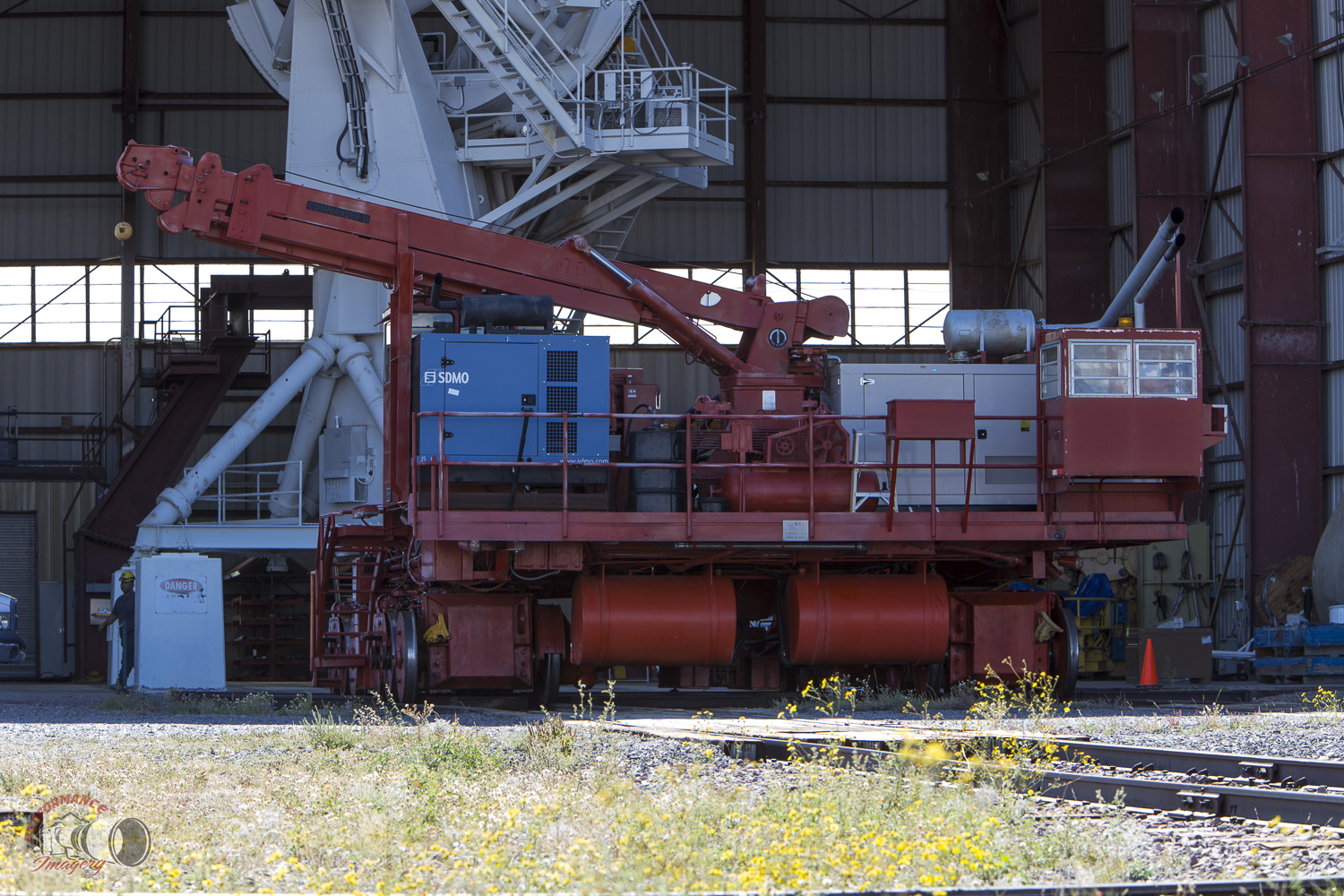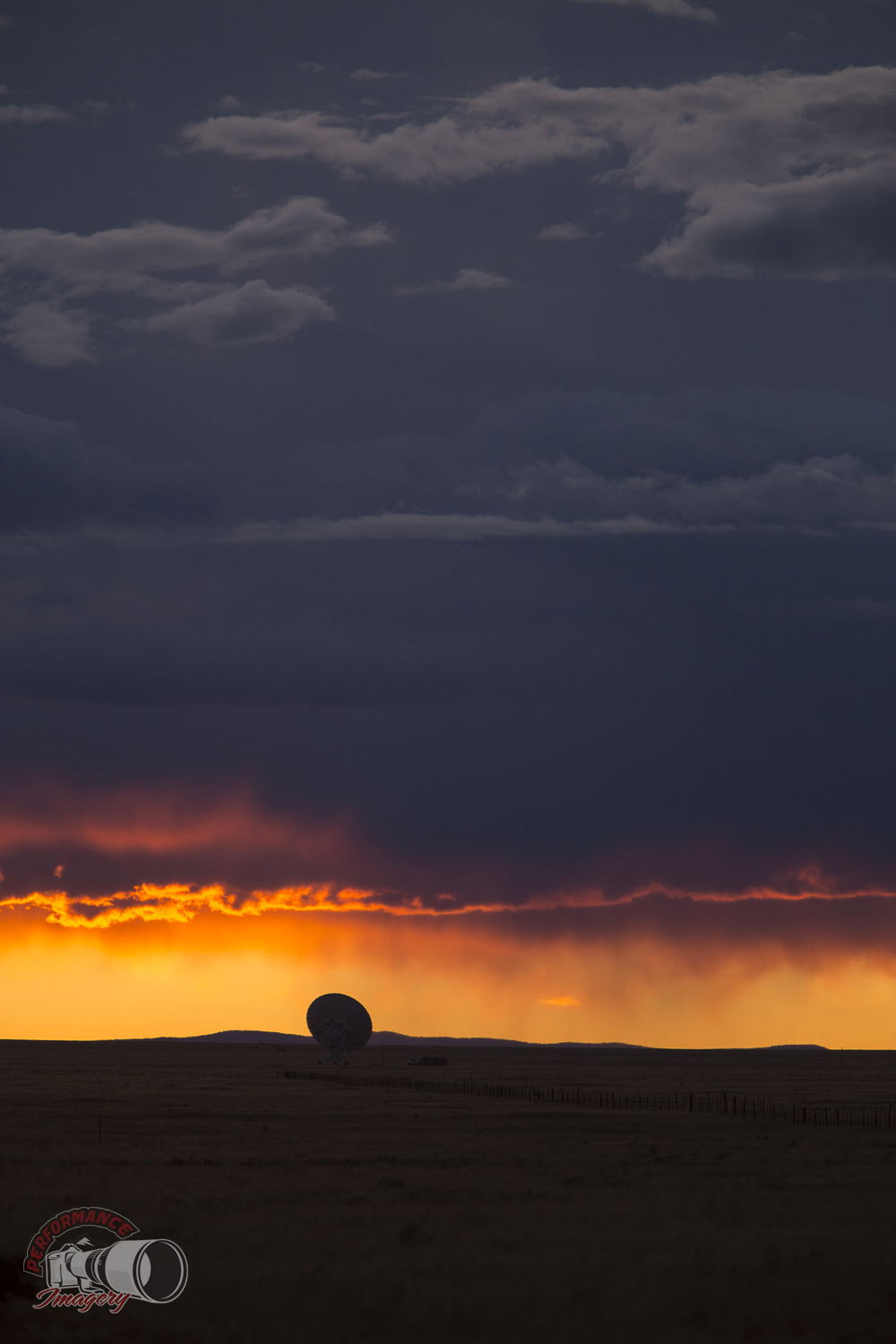Etoimos
Observer
I recently had the opportunity to drive down to New Mexico in the middle of the week to check out the Very Large Array (VLA). Some of you might remember seeing the VLA in movie Contact staring Jodi Foster. For those of you that do not know what the VLA is, here is the description from the National Radio Astronomy Observatory:
“The Very Large Array, one of the world's premier astronomical radio observatories, consists of 27 radio antennas in a Y-shaped configuration on the Plains of San Agustin fifty miles west of Socorro, New Mexico. Each antenna is 25 meters (82 feet) in diameter. The data from the antennas is combined electronically to give the resolution of an antenna 36 km (22 miles) across, with the equivalent sensitivity of a dish 130 meters (422 feet) in diameter.”
I was at the VLA in mid-September and it was in configuration A, the most spread out configuration. They post a schedule showing what configuration the Array will be in. This is very helpful if you are trying to get certain photographs. I am already thinking about a return trip while it is in configuration C or D to get some photos of the dishes all clustered together.
Day 1: Peyton, CO to San Lorenzo Canyon, NM
Miles: 471.6 mi
Trip Time: 8 hrs 42 min
Average Speed: 54.1 mph
Ascent: 8,468 ft
Decent: 10,041 ft

The majority of Day 1 was uneventful Interstate traveling. Once you exit off of I-25 heading South, things get a little more interesting. You have to travel the service road for a ways and it crosses under I-25 twice via those really narrow passage ways.

You quickly leave what little civilization there is behind and find yourself in a wide valley surrounded by low scrub and cacti.


The San Lorenzo Canyon is a really cool area with several small side canyons with campsites at the end of them. One of them is particularly narrow and goes quite a bit deeper into the canyon before it ends at a very unique campsite. I was not expecting much camping activity since it was the middle of the week, but I also wanted to make sure I got this campsite. As such, I decided to setup camp as soon as I got there and explore the rest of the area on foot and the next day with the Jeep.

I was hoping to get some photos of the Milky Way and star trails from the campsite inside the narrow canyon, but there was a thin layer of clouds that foiled those plans. Around 0100 in the morning the sky cleared up some, but by then the Galactic Core had set and the photos came out just so-so. I did manage to get some night time campsite photos illuminated by the campfire and the off-road lights from the Jeep.


When my so saw that last photo, he asked me if I camped inside a huge cave! lol
“The Very Large Array, one of the world's premier astronomical radio observatories, consists of 27 radio antennas in a Y-shaped configuration on the Plains of San Agustin fifty miles west of Socorro, New Mexico. Each antenna is 25 meters (82 feet) in diameter. The data from the antennas is combined electronically to give the resolution of an antenna 36 km (22 miles) across, with the equivalent sensitivity of a dish 130 meters (422 feet) in diameter.”
I was at the VLA in mid-September and it was in configuration A, the most spread out configuration. They post a schedule showing what configuration the Array will be in. This is very helpful if you are trying to get certain photographs. I am already thinking about a return trip while it is in configuration C or D to get some photos of the dishes all clustered together.
Day 1: Peyton, CO to San Lorenzo Canyon, NM
Miles: 471.6 mi
Trip Time: 8 hrs 42 min
Average Speed: 54.1 mph
Ascent: 8,468 ft
Decent: 10,041 ft

The majority of Day 1 was uneventful Interstate traveling. Once you exit off of I-25 heading South, things get a little more interesting. You have to travel the service road for a ways and it crosses under I-25 twice via those really narrow passage ways.

You quickly leave what little civilization there is behind and find yourself in a wide valley surrounded by low scrub and cacti.


The San Lorenzo Canyon is a really cool area with several small side canyons with campsites at the end of them. One of them is particularly narrow and goes quite a bit deeper into the canyon before it ends at a very unique campsite. I was not expecting much camping activity since it was the middle of the week, but I also wanted to make sure I got this campsite. As such, I decided to setup camp as soon as I got there and explore the rest of the area on foot and the next day with the Jeep.

I was hoping to get some photos of the Milky Way and star trails from the campsite inside the narrow canyon, but there was a thin layer of clouds that foiled those plans. Around 0100 in the morning the sky cleared up some, but by then the Galactic Core had set and the photos came out just so-so. I did manage to get some night time campsite photos illuminated by the campfire and the off-road lights from the Jeep.


When my so saw that last photo, he asked me if I camped inside a huge cave! lol

